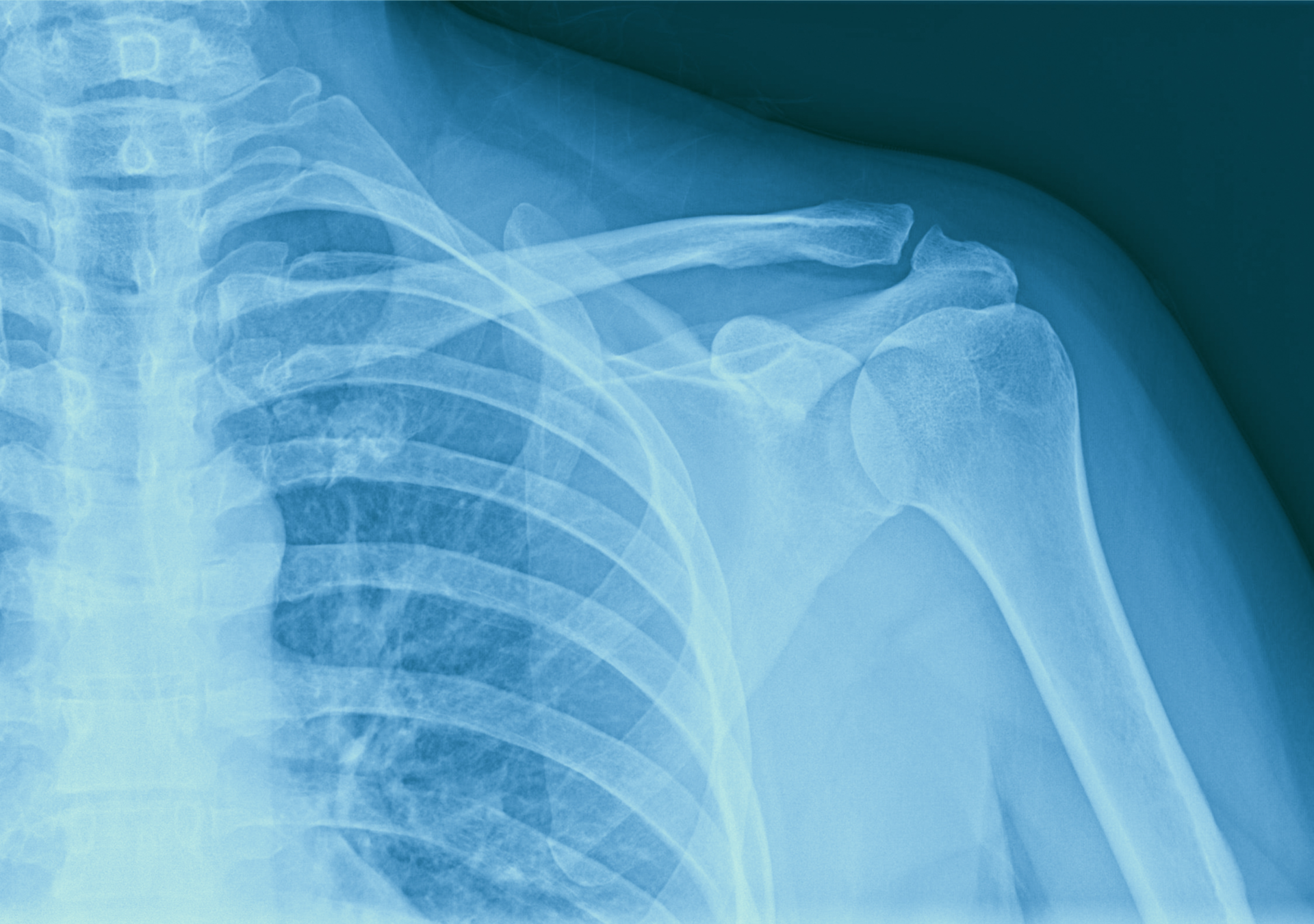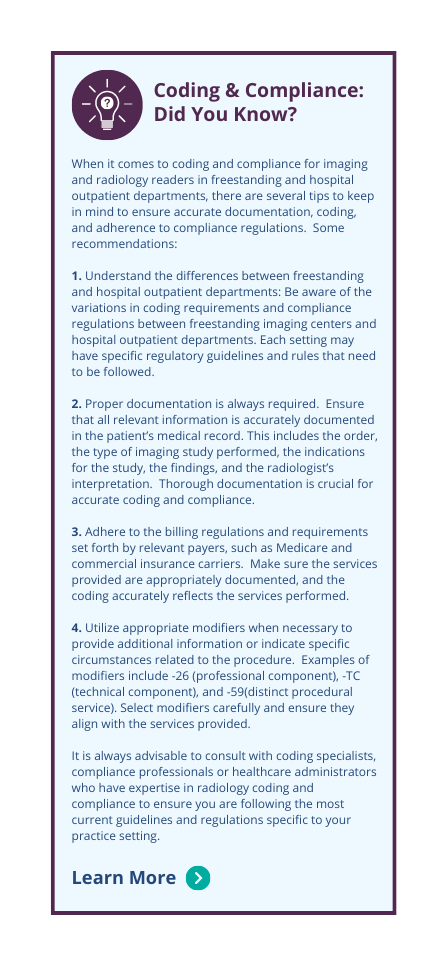
Written by Stephen H. Schulte, CVA, and Madison Higgins
The following article was published by VMG Health’s Imaging & Radiology Affinity Group
In recent years, the healthcare industry has experienced a shift toward freestanding sites of service as more patients opt for lower-cost, convenient, and specialized care. This trend is particularly evident in outpatient imaging services where patients are increasingly opting for the comfort and accessibility of freestanding imaging centers over hospital outpatient departments (HOPDs). As a result, hospitals and health systems are becoming increasingly eager to partner with established operators of freestanding imaging centers. These partnerships often include the acquisition of an ownership interest in an existing freestanding center but may also include the contribution of their HOPD imaging operations to an existing freestanding center or potentially to a new joint venture (JV). When considering the conversion of an imaging HOPD to a freestanding center, there are several important factors to consider from a fair market value (FMV) valuation perspective. These include the proper identification of the volumes to be included in the conversion, the potential impact on patient volumes and reimbursement, changes to the operating expense structure, and the contribution of necessary equipment.
Scan Volume
Correctly identifying the specific volumes that would be a part of this transition is one of the most critical factors to consider when valuing an imaging HOPD that will convert to a freestanding imaging center. Imaging volumes within an HOPD may include volumes related to different service lines such as emergency room visits, outpatient surgical procedures, routine outpatient imaging services, etc. Based on our experience in these situations, the volumes related to routine outpatient imaging services are the most likely to transition. With that said, the volumes related to emergency room visits and outpatient surgical procedures are less likely to transition due to logistics and other clinical factors.
Once the appropriate volumes have been identified, it is important to understand what impact, if any, there would be upon the transition to freestanding operations. The operations of an imaging HOPD may have a large volume of high-acuity scans for patients with more severe health conditions which could be at risk in a freestanding setting. Alternatively, freestanding imaging centers typically provide more convenience for patients since they are generally located closer to residential areas, have their own dedicated parking areas, and patients do not have to navigate the larger hospital environment. This convenience factor can lead to an increase in patient volumes across all modalities but is particularly evident for routine imaging procedures such as X-rays, mammography, and bone density scans. Additionally, as mentioned above, freestanding imaging centers tend to be the low-cost provider compared to an HOPD which may also positively impact volumes. Due to the complexity surrounding these factors, future volume expectations should be discussed in detail with those who are familiar with the current volumes, area demographics, and the competitive landscape in the local marketplace.
Reimbursement/Net Operating Revenue
Another key consideration is the potential shift in reimbursement rates and the impact on the net operating revenue. Reimbursement rates at an HOPD level may not be directly achievable for a freestanding center for a variety of reasons. HOPDs receive Medicare reimbursement rates according to the Outpatient Prospective Payment System (OPPS) set forth by the Centers for Medicare & Medicaid Services (CMS), while freestanding facilities receive Medicare reimbursement rates according to the Medicare Physician Fee Schedule (MPFS).
In general, OPPS rates tend to be higher than MPFS rates for the same service and can result in an expected decrease in Medicare reimbursement that must be accounted for in a valuation. Additionally, commercial payors typically reimburse at rates equal to or higher than Medicare. For valuation purposes, the assumed commercial payor rates should be theoretically achievable by any hypothetical market participant. The reimbursement rate for a given service will depend on many factors, including the location of the provider, local market dynamics, and changes in federal and state healthcare regulations.

Operating Expenses
Imaging HOPDs are typically accounted for as distinct operating units within the internal framework of the hospital. In many instances, the hospital will track certain elements of the cost structure to operate the unit, but detailed operating expenses are not available. The operating expenses accounted for may include costs that are simply allocated to the unit from the overall hospital operations and may not represent the true operating expenses needed to fully run the business. Additionally, the operating expenses that are reported internally may simply represent the direct costs that are easily identified and would not include the full picture. For instance, the internal financial statements for an HOPD typically do not include certain expenses such as facility rent, utilities, janitorial, and administrative functions such as billing and collection services, legal services, etc. In these situations, it is important to remember the intention of the valuation analysis is to simulate the business as if it were operating on a freestanding basis. Accordingly, the valuation will likely include adjustments to the operating expense profile to match the projected net revenues and volumes. In many cases, this will include a full build-up of operating expenses to include all applicable staff salaries and wages, benefits, occupancy costs, supplies, etc. This may be an iterative exercise that could include input from both the appraiser and the hospital to be certain the appropriate operating expenses are fully accounted for and are consistent with both industry and local market dynamics.
Equipment
When valuing an imaging HOPD, it is critical to account for the equipment needed to provide the projected volumes and net revenues. This equipment includes the imaging machines, computers, and software required to perform the imaging procedures. Depending on the structure of the imaging HOPD, certain pieces of equipment may be utilized to service both the outpatient and inpatient volumes of the hospital. In this case, the hospital may choose to retain the equipment and not contribute it as part of the potential transaction since it will continue to provide services at the hospital even after the properly identified outpatient volume is transitioned out of the HOPD. If the hospital chooses to retain the equipment or certain pieces of equipment, it is essential for the valuation to make a deduction to account for the equipment not being contributed. In addition, this dynamic has both operating and transaction implications since the freestanding imaging center will either need to be able to service the projected volumes with existing equipment or it will need to adequately plan for the capital purchase to acquire the additional equipment.
In summary, outpatient imaging joint ventures have been common in recent years with many hospitals and health systems considering the contribution of their HOPD imaging operations. With the continued focus of patients on convenience and their desire to utilize lower-cost options, it is expected that this type of transaction will continue to be a consideration for hospitals and health systems in the future.





